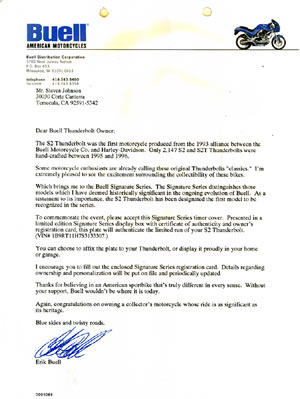Initially viewed as a match made in heaven, 1993 saw the alliance between the BUELL Motor Company and Harley-Davidson, resulting in the birth of the BUELL Motorcycle Company, of which Erik Buell held 51%, and Harley-Davidson the remaining 49%. The infusion of H-D cash and resources allowed BUELL to build an All-American motorcycle without the monetary restraints the entrepreneur previously had to endure. This first bike was named BUELL S2 Thunderbolt and introduced to the public in 1994 as a 1995 model.
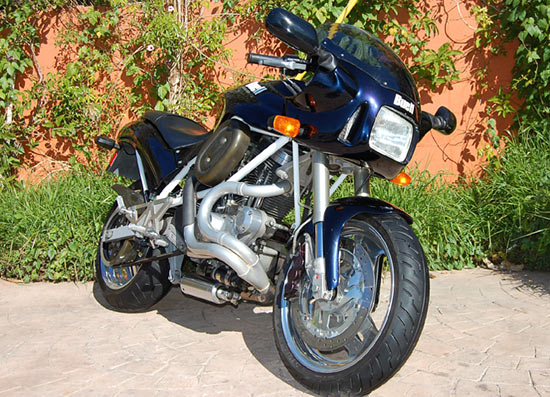
(Click on the above image for an XXL-sized view (a separate browser window will open)
The S2 Thunderbolt retained styling elements from the 1200RS/RSS Westwind, its ancestor from BUELL's independent era, yet boasted various refinements and some truly unique features. Its heart was Harley-Davidson's 1203cc Evolution engine, slightly enhanced in horsepower and torque by allowing it to inhale and exhale easier. With 76 horses on tap, the 475-lb. bike was no match for the high-revving supersports from Japan, and never aspired to be one. But its stump-pulling 76 ft-lbs. of torque from low down allowed the Thunderbolt to provide a riding experience that couldn't be found anywhere else.

Click on the above image for an XXL-sized view (a separate browser window will open)
And that's exactly what makes the Thunderbolt so special. It's a gentleman's express that combines the best of both worlds by providing riders the Harley-Davidson experience of a big, honkin' V-Twin, stuffed into a world-class chassis designed by an accomplished Harley-Davidson road racer. Interestingly, the same chassis should later serve in one of Team Elves' Bonneville BUELLs, which hold no less than 4 motorcycle World Landspeed records to this day.

|
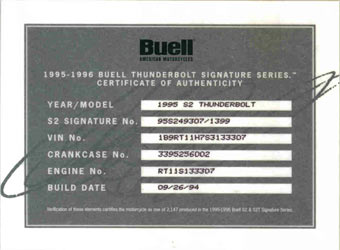
|
Click on any of the above images for a full-size view
Images above show the installed timing cover and the matching Certificate of Authenticity for #307.
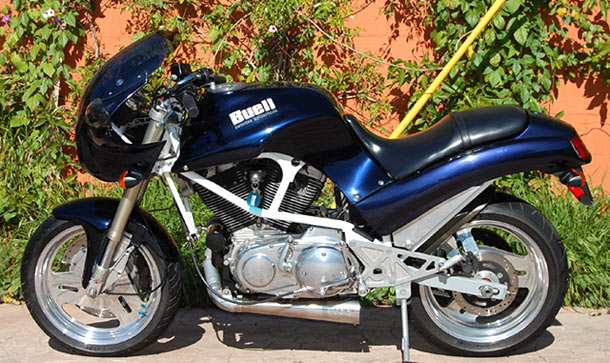
Click on the above image for an XXL-sized view (a separate browser window will open)
Glancing at the Thunderbolt, the eye immediately catches the beautiful, artisan-quality tube frame, which was TIG-welded by one person: race car fabricator Jim Schneider. Quite Ducati-esque in its execution, the bike features a short, 55-inch wheelbase, allowing for quick response to rider input, making it a blast to ride through the twisties. All of the BUELL S2 frames were powdercoated white, an exclusive feature they share with some contemporary Ducatis, making them unique in the world of BUELLs.
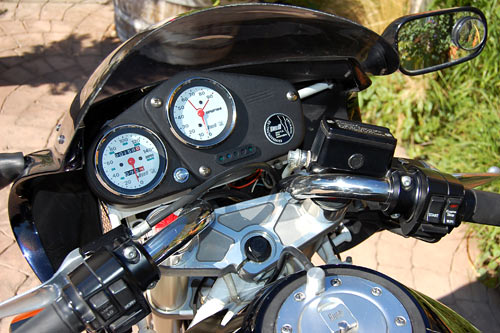
Click on the above image for an XXL-sized view (a separate browser window will open)
Also white were the fascias of the two BUELL branded factory gauges, a prominently mounted tachometer and a speedometer to the left. Notice the interesting badge to the right of the dash which, for the first time, eliminated any reference to the Harley-Davidson sourced engine.
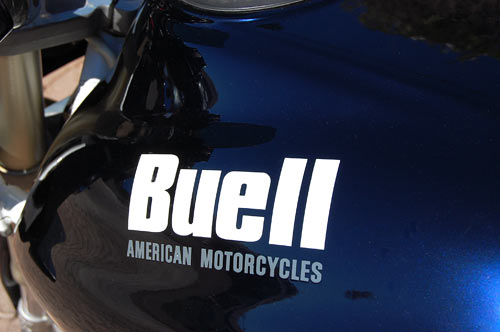
CClick on the above image for an XXL-sized view (a separate browser window will open)
The '95 S2 Thunderbolt was available in the following five, quite eclectic paint colors (from light to dark):
- Ice White Pearl
- Yellow Jacket Pearl
- Red Snap
- Caribbean Candy Blue
- Black Sapphire Pearl
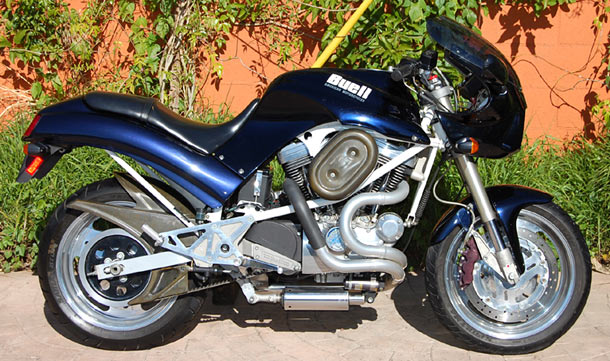
Click on the above image for an XXL-sized view (a separate browser window will open)
Reportedly, the body's styling curves were inspired by a Vargas painting of a beautiful woman. All of the painted bodywork, namely the front fairing, the front fender, the fuel tank cover, and the tail section, were made from hand-laid fiberglass, a very elaborate and enormously time-consuming method. Since it was also prohibitively expensive, even for a hand-built bike like the first year Thunderbolt, BUELL switched to ABS plastic for the 1996 model year.
Consequently, original fiberglass replacement parts now cost an arm, a leg, and a pint of blood.
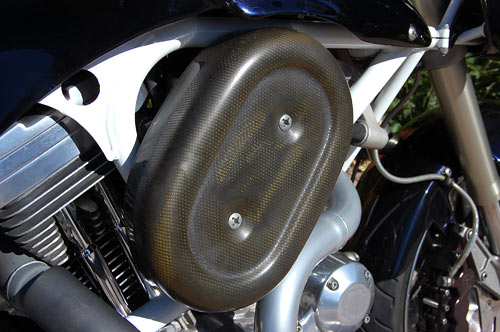
Click on the above image for an XXL-sized view (a separate browser window will open)
Hard to believe, 15 years ago, when carbon fiber was as exotic and difficult to work with as a belly dancer from Bengal, BUELL used this very material for its air cleaner housings. By now, the aftermarket industry has caught up, but the original pieces are easily identified by their greenish tint and the label attached to them.
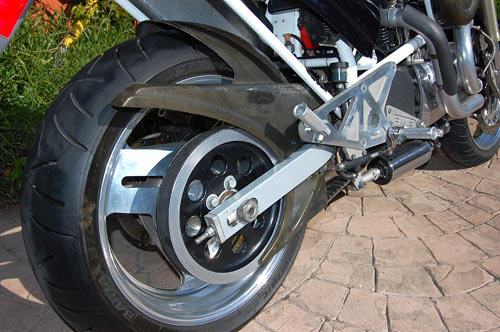
Click on the above image for an XXL-sized view (a separate browser window will open)
Also made from carbon fiber was the '95 rear fender and belt guard. Although the S2 Thunderbolt was manufactured for two years, the '96 models had to do with black painted plastic instead.
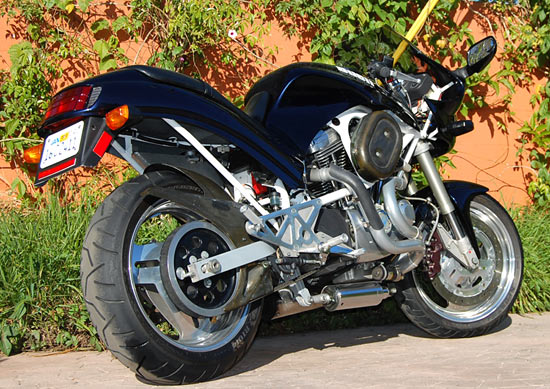
Click on the above image for an XXL-sized view (a separate browser window will open)
At a MSRP of $11,900.00, a decade-and-a-half ago, the new Thunderbolt wasn't exactly cheap, yet an incredible bargain in the world of hand built bikes. Consequently, a series of 300 bikes was targeted and frame numbers (starting wth 1B9...) were assigned and stamped accordingly, starting in January of 1994.
When the reception of the bike by the motorcycling public was overwhelmingly positive and additional orders poured in, Buell had to manufacture a second, much bigger batch of frames (which--nobody really knows why--start with 4MZ...) and switch from TIG welding to MIG welding, just to save time when keeping up with demand.
Since my bike's frame was manufactured on September 26, 1994, is production #307 and still has the 1B9 VIN, it must be among the last ones built from the aforementioned first batch, of which the very first 30 bikes went straight into prominent collections.
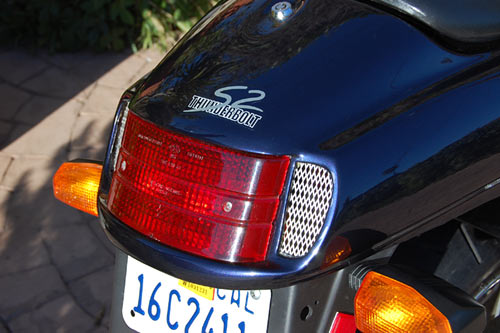
Click on the above image for an XXL-sized view (a separate browser window will open)
Sadly, within the past 15 years, quite a few S2s Thunderbolts have lost their life to accidents or when their heart and other organs were used to animate choppers. Others have been modified, often beyond the boundaries of good taste, to a point of no return. Despite all that, a nice S2 Thunderbolt can still be bought rather inexpensively--for about $3,500 to $4,500--if one comes up for sale. After the untimely demise of the BUELL Motorcycle company, that is about to change.
Often seen as not only the most beautiful but also the best all around BUELL ever made, prices for clean, original examples are bound to go up as surely as the sun rises in the morning.
Value isn't everything, though; what really matters most is the incredible experience of riding a tube frame BUELL. Once you've ridden one, you'll understand its mystique and might agree: there's nothing like it on Earth.
